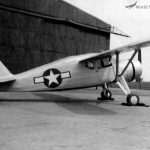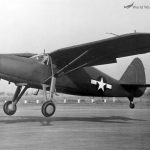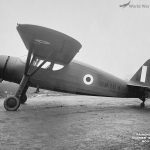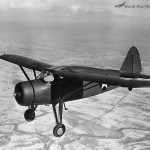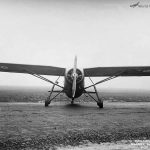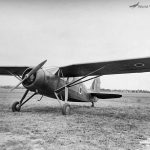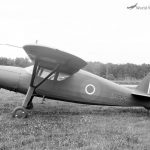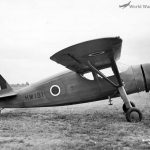43-14604 Mount Farm, England
UC-61 43-14500, England 1944
Forwarder 41-38771, England
UC-61 41-38771, England
UC-61A 43-14613
GK-1 793
UC-61K Forwarder
Fairchild F24W HM164
Fairchild C-61
Argus I HM184 November 1941
Argus I HM181 Heston
Argus I HM181 September 1942
Argus II HB552 223 Group
Argus II FS626 Asia
Argus III KK447 (ex UC-61K 44-83104)
Argus III HB652
Argus HM164
Argus Mk I HM181
The Fairchild F-24 gained great popularity in the civilian market and were eagerly purchased by businessmen. In 1936, the US Navy purchased Fairchild F-24 aircraft and used them under the designations GK-1 and JK-1. It was also used by the US Army as a light transport aircraft and by the United States Coast Guard (Coast Guard) under the designation J2K. Also, the Civil Air Patrol air formation used a large number of Fairchild F-24 aircraft armed with 2 bombs. They were used to carry out patrol flights against German submarines off the east coast of the US in the early stages of World War II. The UC-61 aircraft were supplied to the US Navy as the GK-1 and to the UK, where they were used under the Fairchild “Argus” name. In 1941, the USAAF ordered 163 UC-61 aircraft, but under the Lend-Lease Act, 161 of them were shipped overseas. Under this program, 525 ex. UC-61 were delivered to the UK, where they received the designation “Argus” Mk.I and “Argus” Mk.II. They were assigned to the newly formed RAF- Air Transport Auxiliary command. 306 exemplars of the “Argus” Mk.III version were also delivered. In British aviation, most of the “Argus” aircraft were used in the Air Transport Auxiliary, serving on service flights and transporting airmen from operational airfields to Maintenance Units for equipment repair and delivery.
General Specifications
- Type: Four-seat utility-cargo monoplane.
Wings
- Configuration: High-wing braced monoplane with two sections.
- Attachment: The wings are attached to the top fuselage longerons and braced to the bottom longerons by parallel steel-tube struts.
- Wing Section: No. 22 wing section, tapering in plan and section at the fuselage.
- Structure: Composed of spruce spars and ribs, duralumin and steel-tube compression struts, wire drag bracing, plywood leading-edge, and fabric covering.
- Control Surfaces: Frise-type statically-balanced ailerons with built-up aluminium-alloy frames and fabric covering. The flaps have aluminium-alloy and wood frames with aluminium sheet covering.
Fuselage
- Construction: Rectangular welded steel-tube structure covered with fabric.
Tail Unit
- Type: Normal monoplane type.
- Components: The tailplane and fin have wood spars with plywood covering, while the rudder and elevators consist of welded steel-tube frames with fabric covering. Adjustable trimming-tabs are on the elevators.
Landing Gear
- Type: Divided type.
- Components: Each unit has a Fairchild oleo leg with 8 inches of travel, connected to the front wing-bracing strut at the top and hinged to the bottom fuselage longerons by a steel-tube axle and a backwardly-inclined radius-rod.
- Features: Medium-pressure tires and wheel-brakes. The tail-wheel is a steerable-automatic swivel oleo-spring type.
Power Plant
- Engine: One 200 h.p. Ranger L-440-7 six-cylinder in-line inverted air-cooled engine on a steel-tube mounting.
- Fuel Capacity: Two fuel tanks located in the wing roots, with a total capacity of 60 U.S. gallons.
Accommodation
- Cabin: Enclosed cabin seating four individuals in two pairs, with dual controls for the front seats.
- Features: Sloping windshield, side windows, and two doors (one on each side) for access to the front seats. Seat cushions can be removed for seat-type parachutes. Dual controls are removable.
Dimensions
- Span: 36 ft. 4 in. (11.7 m)
- Length: 23 ft. 10.5 in. (7.24 m)
- Height: 7 ft. 7.5 in. (2.3 m)
- Wing Area: 193.3 sq. ft. (18.5 sq. m)
Weights and Loadings
- Empty Weight: 1,813 lbs. (823 kg)
- Loaded Weight: 2,882 lbs. (1,308 kg)
- Wing Loading: 14.9 lbs./sq. ft. (72.7 kg/sq. m)
- Power Loading: 14.4 lbs./h.p. (6.5 kg/h.p.)
Performance
- Maximum Speed: 124 m.p.h. (198.4 km/h)
- Cruising Speed: 112 m.p.h. (179.2 km/h)
- Landing Speed: 57 m.p.h. (91.2 km/h)
- Service Ceiling: 12,700 ft. (3,873 m)
- Range: Normal range of 465 miles (745 km)
This aircraft is well-suited for utility and cargo roles, offering good performance for a light utility monoplane. The high-wing design and robust landing gear are likely intended to provide good visibility and ruggedness for various missions.



